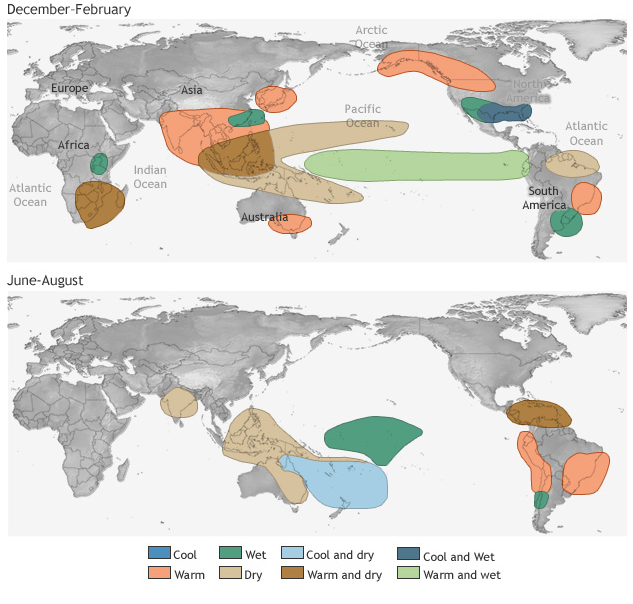In May 2023, meteorologists reported the formation of an El Niño episode. This phenomenon, which will disturb meteorological conditions around the world, will most likely magnify the global temperature rise related to already existing climate change.
This year, El Niño formed one to two months earlier than average compared to previous episodes, giving it more time to develop. Scientists fear that this latest episode might reach exceptional levels, almost certainly raising the likelihood that the years 2023-2027 will become the hottest period ever recorded on Earth under the combined effects of El Niño and climate change. Generally, El Niño results in higher global temperatures the year following its occurrence, which in this case corresponds to 2024.
Additionally, experts are concerned that the global mean surface temperature for each year between 2023 and 2027 may be between 1.1 and 1.8°C higher than the 1850-1900 average, the baseline period corresponding to the pre-industrial age.
Consequently, forecasts indicate that the psychological threshold of 1.5°C mentioned in the Paris Agreement may be temporarily exceeded with increasing frequency.
The occurrence of a new El Niño episode, the intensity of which will be confirmed this fall, reminds us of the importance and urgency of stepping up collective efforts at the regional, national and global levels to reduce GHG emissions and adapt to the effects of climate change.
>> Follow the evolution of El Niño
Understanding the phenomenon
El Niño is a natural climate phenomenon that occurs periodically in the Pacific Ocean and has a major influence on climate regimes in different regions of the world. It corresponds to the warm phase of an irregular cycle known as ENSO (El Niño – Southern Oscillation), which encompasses both El Niño and La Niña.
This cycle is characterized by changes in a number of variables in the atmosphere-ocean system in the equatorial Pacific such as ocean surface temperature, precipitation and the wind regime. It occurs every two to seven years and its episodes generally last between nine and twelve months.
The complex mechanics of the El Niño phenomenon make it difficult to predict the magnitude and intensity of its episodes. However, it is known that its effects do not manifest themselves equally from one region to another, and that the Southern Hemisphere is generally more affected.
From June to August, hotter and drier weather is forecast, particularly in Australia, Indonesia and several parts of South America, which could lead to severe drought. On the other hand, from December to February, parts of the Horn of Africa, southeastern South America and the southern USA could experience wetter weather and increased precipitation (Figure 1).
These extreme meteorological conditions can notably result in failed crops worldwide and increase the risk of flooding, affecting the most vulnerable populations in various parts of the globe.
In Canada, an El Niño episode may tend to make winters milder in western parts of the country. The phenomenon has little influence in Quebec, however.

Figure 1 : Impacts of El Niño from December to February (top map) and fromt June to August (bottom map). Source : Climate.gov
Influence of climate change
The influence of climate change on ENSO remains difficult to quantify, as discussed in the IPCC’s most recent assessment report. It is practically certain, however, that ENSO will remain the dominant mode of inter-annual variability in the future. As a result, variability in regional precipitation will be considerably higher between now and mid-century.